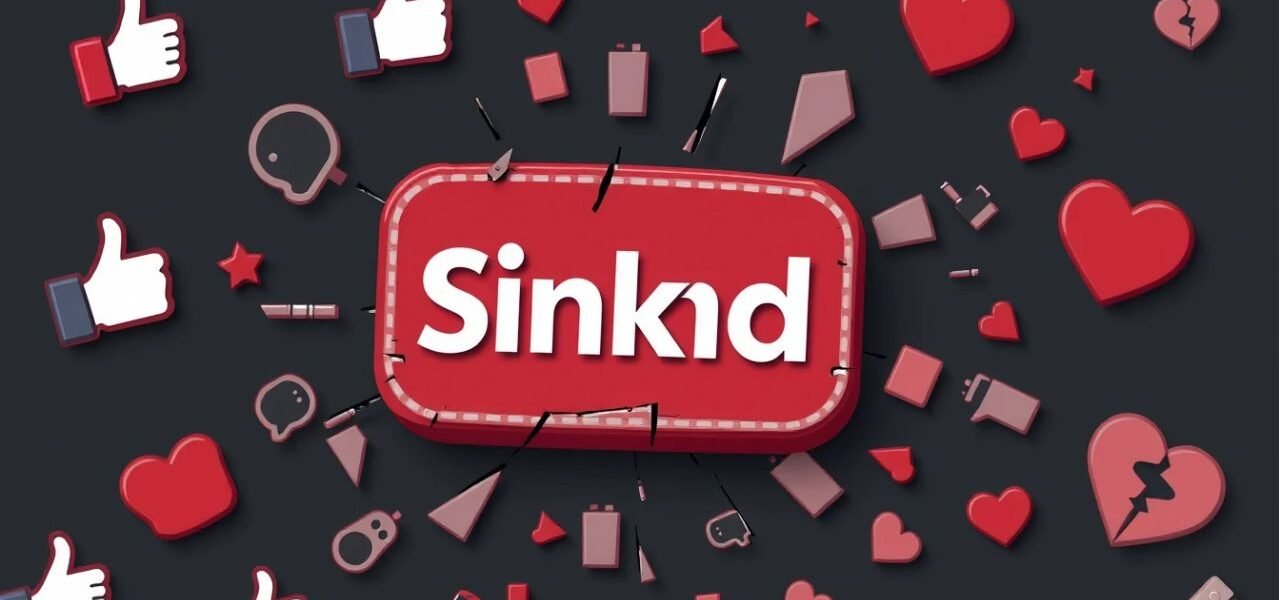Social media is like a big playground. Everyone is talking, sharing, and playing together. But if you make too many mistakes, people might stop listening to you. That’s why avoiding social media mistakes is super important if you want your brand to grow and shine online.
Many brands make simple errors. They post too much. Or not enough. Some forget to answer questions. Others use blurry photos. And some brands just talk about themselves all day. These things can make people feel bored or ignored.
But don’t worry. In this guide, you will learn how to fix these social media mistakes. You’ll also learn how to talk to people in a way they like. When you do it right, people trust your brand. They tell their friends. And your business grows. That’s called brand engagement.
We’ll also give you real examples. Like what happens when you post low-quality photos. Or why replying to comments is a game changer. You’ll also learn why your brand voice matters.
At the end, you’ll find answers to questions people ask all the time. We’ll also share quick tips to help you build a stronger online brand.
Ready to become a social media superstar? Let’s go! This post is your complete map to spot and fix social media mistakes before they harm your business.
- Why Social Media Matters More Than Ever
- Not Having a Clear Social Strategy
- Ignoring Comments and DMs
- Posting Too Much or Too Little
- Copying Competitors
- Deleting Negative Feedback
- Ignoring Trends and New Features
- Overusing Hashtags
- Focusing Only on Selling
- Inconsistent Branding
- Buying Followers or Engagement
- Ignoring Analytics
- Not Using a Content Calendar
- Not Adapting to Platform-Specific Content Styles
- Not Having a Crisis Management Plan
- Frequently Asked Questions About Social Media Mistakes
- Final Thoughts
Why Social Media Matters More Than Ever
Social media is like a big meeting place. Millions of people hang out there every day. They chat, watch videos, and shop. So, if your brand isn’t showing up the right way, you’re missing out.
In today’s world, brands that connect with people online do better. They build trust, get more sales, and grow fast. But here’s the thing—just being on social media isn’t enough. You have to be smart.
Social media mistakes can hurt your brand. If you post the wrong things, people may stop following you. If you ignore them, they may feel unimportant. These small errors can lead to big problems.
For example, a pizza shop once replied rudely to a customer’s complaint. That one mistake went viral. People stopped buying from them. All because of one social media slip-up.
That’s why learning what not to do is just as important as knowing what to do. Brands need a plan, good content, and kind replies.
So remember, social media isn’t just for fun. It’s a tool that can help your business grow or fall apart—based on how you use it. That’s why this post matters.
Not Having a Clear Social Strategy

Before you post anything, ask this: “What’s my goal?”
Many brands post randomly. One day it’s a meme. The next day, it’s a product photo. But without a plan, it feels messy.
A clear social strategy means:
- Knowing your audience
- Setting goals like more followers or sales
- Planning posts ahead of time
- Picking the right platforms (not every brand needs TikTok!)
Let’s say you sell handmade soaps. You should post tips about skin care, behind-the-scenes of soap making, and customer reviews. That’s a targeted strategy.
When brands don’t have a plan, they:
- Confuse their audience
- Post without purpose
- Miss out on trends
A brand like Makhan Digital follows a clear strategy. On their services page, they explain exactly how they help businesses grow online. That clarity shows up in their social media, too.
Pro Tip: Use tools like Trello or Notion to plan your content weekly. Know what you’ll post, when, and why.
Remember: If you don’t know where you’re going, you’ll get lost. Your audience will, too.
Ignoring Comments and DMs

Imagine talking to someone and they walk away. That’s what happens when you ignore messages on social media. It feels rude.
Your followers want to feel heard. If someone asks a question or leaves a comment, reply quickly. A short “Thanks!” or “We’ll check it out!” goes a long way.
Common mistakes:
- Leaving DMs unread
- Taking too long to respond
- Only replying to good comments
You must reply to everyone, even if it’s a complaint. Be polite. Be helpful. That’s how you turn upset customers into loyal fans.
For example, a clothing brand once replied kindly to a person who had a late delivery. Not only did they solve the issue, but the customer posted about how great their service was. That’s free promotion!
Use auto-replies if you get lots of messages. Set expectations like “We’ll reply in 24 hours.”
When you engage, people trust your brand more. And trust builds brand loyalty.
Posting Too Much or Too Little

Some brands post too often. Others vanish for weeks. Both are bad.
Posting too much floods feeds. People might mute you. Posting too little makes people forget you. You need balance.
How much is just right?
- Instagram: 3–5 times per week
- Facebook: 2–3 times
- Twitter (X): Daily if you can
Plan a mix of content:
- Product shots
- Customer reviews
- Tips or “How-tos”
- Team behind the brand
Use a calendar to track your schedule. Try posting at the same time every day. That way, your audience knows when to expect you.
One big social media mistake is ghosting after going viral. Imagine getting 10K followers in a day and not posting again for a month. That’s lost momentum!
Stay consistent. It’s better to post three great times than ten random ones.
Copying Competitors

Looking at others for ideas is fine. But copying everything they do? Not smart.
Every brand is different. Your voice, your story, your style—these matter. If you sound like everyone else, why should someone follow you?
Let’s say your competitor posts funny memes. You try the same, but it feels forced. That’s a problem. Instead, post what feels authentic to your brand.
Find your unique angle:
- Are you funny? Be funny.
- Are you inspiring? Share stories.
- Are you about luxury? Keep it sleek.
Use your brand guidelines. Keep your colors, tone, and logo the same across posts. That way, even if someone scrolls fast, they’ll recognize you.
Also, what works for others might not work for you. A car company using TikTok dances won’t work like it does for a makeup brand.
Be original. That’s how you stand out—and avoid costly social media mistakes.
Deleting Negative Feedback

Bad reviews don’t feel good. But deleting them? That’s worse.
When people see only 5-star comments, they may not trust your brand. They’ll think you hide the truth.
Here’s a better way: Respond calmly. Say sorry. Offer help. That shows you care.
Example:
- Bad comment: “This shirt shrank after one wash!”
- Good reply: “We’re so sorry! Please DM us—we’ll replace it right away.”
That’s real customer care. It turns a negative into a win.
Brands that delete or block upset customers look shady. And once people post screenshots, it’s hard to fix your image.
It’s okay to hide spam or hateful messages. But real feedback? Treat it with respect.
Ignoring Trends and New Features

Social media changes fast. New filters, features, and trends pop up every week.
If you ignore them, you fall behind. People may think your brand is old or out of touch.
Use what’s new:
- Try Reels on Instagram
- Go live on Facebook
- Use trending hashtags on X (Twitter)
- Jump on viral sounds on TikTok
But make it match your brand. Don’t just dance for views if you sell B2B software. Instead, maybe share a quick “Did You Know?” video.
A good mix of evergreen and trending content helps. Evergreen builds trust. Trending gets you reach.
Stay current. That’s how you stay visible.
Overusing Hashtags

Hashtags are powerful — but only when used smartly. Many brands go overboard, thinking more hashtags = more reach. But flooding your posts with 30+ hashtags looks desperate and spammy.
Instead, use:
- 3–5 relevant hashtags per post
- A mix of popular, niche, and branded hashtags
- Hashtags that match your content — not just trending for the sake of it
Bad Example:
#love #instagood #fun #marketing #digitalmarketing #igers #like4like #followme (Random and not specific)
Good Example:
#SmallBusinessMarketing #SocialMediaMistakes #BrandGrowthTips (Targeted and brand-aligned)
On platforms like LinkedIn, fewer hashtags (2–3) work better. On Instagram, up to 10–12 is okay — but only if they add value.
Want better hashtag ideas? Use tools like:
- RiteTag
- Hashtagify
- Later’s Hashtag Suggestions
And never copy-paste the same block of hashtags. That’s a red flag for algorithms. Keep them fresh and relevant.
Focusing Only on Selling

“Buy now!” “Shop this!” “50% off!” — That gets tiring.
If every post is about selling, you’ll lose your audience. People come to social media to be entertained, educated, or inspired — not just sold to.
The 80/20 Rule is your friend:
- 80% of your content should provide value (tips, stories, entertainment, etc.)
- 20% can be direct promotion
Example Content Ideas:
- “Behind the Scenes” of your team
- How your product is made
- User-generated content from happy customers
- Educational reels or tutorials
- Polls and interactive stories
Selling is easier when people already trust your brand. Build that trust first.
People buy from brands they like, not brands that shout the most.
Inconsistent Branding

If your logo, colors, fonts, and tone keep changing, you’re confusing people.
Your brand identity should stay consistent across every platform. Whether someone visits your Instagram or LinkedIn, they should instantly know it’s you.
That includes:
- Visuals (color palette, logo placement, graphics)
- Brand voice (casual, professional, witty, etc.)
- Messaging (what do you stand for?)
Imagine if Coca-Cola suddenly used a green logo and serious tone. People wouldn’t know what to think.
Use tools like Canva Brand Kit or Adobe Creative Cloud to keep things aligned.
Also, create brand guidelines and share them with your team or agency. That ensures consistency even when others manage your content.
Buying Followers or Engagement

Let’s get this straight: Buying followers is a huge mistake.
It may look impressive for a day — but:
- Fake followers don’t engage
- Your metrics (reach, CTR, conversion) suffer
- Platforms detect fake growth and may shadowban you
- You lose credibility with real followers
Focus on organic growth instead:
- Collaborate with other creators
- Run giveaways or contests
- Share relatable, shareable content
- Post consistently and use analytics to improve
Real people bring real business. Bots don’t.
Read Also: Mastering Social Commerce for Your Business From Likes to Buys
Ignoring Analytics

You can’t improve what you don’t measure.
Social media isn’t just about likes. You need to track:
- Engagement rate
- Reach & impressions
- Click-through rate (CTR)
- Follower growth
- Best performing post types & times
Use built-in tools like:
- Instagram Insights
- Facebook Creator Studio
- LinkedIn Analytics
- X (Twitter) Analytics
And for advanced data, use:
- Google Analytics (for traffic)
- Sprout Social
- Hootsuite Analytics
- Meta Business Suite
Track weekly. Improve monthly. This helps you make data-driven decisions, not guesses.
Not Using a Content Calendar

Posting on the fly leads to burnout and chaos. A content calendar solves that.
Benefits of using a calendar:
- Plan for holidays and product launches
- Keep posts consistent and aligned with goals
- Collaborate easily with your team
- Reduce last-minute stress
Use tools like:
- Notion
- Trello
- Google Sheets
- Later
- CoSchedule
Plan 1–2 weeks in advance. Include:
- Date
- Caption
- Image/Video
- Platform
- Hashtags
- Goals (engagement, traffic, etc.)
Planning = Peace of mind + Professional presence.
Not Adapting to Platform-Specific Content Styles

Each platform has its language.
You can’t post the same thing on LinkedIn that you do on TikTok.
Platform-specific best practices:
- Instagram: Aesthetic visuals, Reels, short captions, hashtags
- LinkedIn: Professional tone, personal stories, stats, no fluff
- X (Twitter): Threads, hot takes, GIFs, direct tone
- Facebook: Longer-form posts, videos, community groups
- TikTok: Trendy, fast-paced, authentic short videos
Adjust your format and message to fit the platform. Repurpose smartly — don’t just copy-paste.
Not Having a Crisis Management Plan

Sometimes things go wrong. A bad post. A wrong tag. A PR issue.
Do you have a crisis plan?
Steps for crisis handling:
- Identify the issue quickly
- Pause scheduled posts if needed
- Acknowledge it publicly (no ghosting)
- Apologize if you’re at fault
- Offer solutions
- Monitor reactions and update accordingly
Train your team on how to respond. Keep pre-approved statements ready. Be transparent, not defensive.
A fast, honest response can save your reputation — or even strengthen it.
Read Also: 7 Proven Social Media Strategies to Skyrocket Your Online Presence
Frequently Asked Questions About Social Media Mistakes
1. What are the biggest social media mistakes brands make?
The most common social media mistakes include posting without a strategy, ignoring comments, buying fake followers, and being inconsistent. These can hurt your brand’s trust and growth.
2. Why is ignoring customer comments on social media a mistake?
When you ignore comments, followers feel unimportant. Responding builds relationships, shows care, and boosts loyalty—helping your brand stand out.
3. Can posting too often harm my brand?
Yes. Over-posting can annoy followers. Instead, stick to a balanced content calendar and focus on quality over quantity.
4. Is buying followers a smart move?
Not at all. Fake followers don’t engage, hurt your credibility, and may trigger platform penalties. Always grow your audience naturally.
5. How can I fix past social media mistakes?
Start by reviewing your posts. Apologize if needed. Then build a clear plan, improve your tone, and stay consistent to rebuild trust.
6. What happens if I don’t use a social media strategy?
Without a strategy, your posts may confuse followers or fail to meet goals. A plan gives your content direction and purpose.
7. Should I delete negative comments?
It’s better to address them respectfully. Deleting them may make you look dishonest. Solve the issue and show you’re listening.
8. Why does brand voice matter on social media?
A clear brand voice builds recognition. If your tone keeps changing, people won’t connect with your message or trust your brand.
9. What’s the risk of trending content without research?
Jumping on trends without checking facts can backfire. It may offend audiences or seem fake. Always align trends with your brand values.
10. How do I know if I’m making social media mistakes?
Check engagement, reviews, and follower growth. If things are dropping, review your content and ask your audience what they want.
Final Thoughts
Remember: social media mistakes don’t need to end your brand story. With simple fixes, you can turn mistakes into magic. Start by knowing your audience. Speak their language. Share helpful content—not just ads. Listen to their voice. Respond kindly. Post with a consistent look and schedule. Track results. Learn quickly.
When you fix these social media mistakes, your brand becomes clear. You build trust. You grow engagement. You become friendly, consistent, and visible. Your followers become fans.
Big brands and small brands alike can succeed. Even with small effort, careful planning, and love, you can share real value. You can grow day by day. You can avoid the traps that kill brands. You can shine.
So, stop making social media mistakes. Plan. Be human. Be helpful. Be steady. Use data to guide you. Make your social media a safe, fun, and trusted space. Your brand will not only survive—it will flourish. And your audience will stay with you for the long run.






